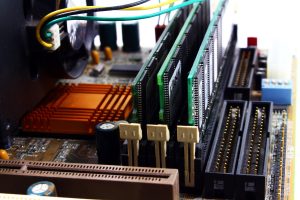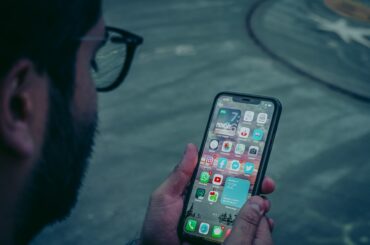Do smartphones have RFID? RFID has been around for decades and is used in everything from credit cards to passports. It’s an electronic chip that can be read by unique readers, like those found on cash registers.
RFID technology is also used in smartphones and other mobile devices to send data back and forth between them. And computers or other devices without touching them directly.
RFID technology.
RFID (radio-frequency identification) is a technology that uses radio waves to connect devices. It’s used in a variety of applications, including authentication and tracking.
RFID can be found in many places, including passports and driver’s licenses. But it also exists on smartphones. The device broadcasts its unique ID so the service can use it for authentication purposes.
Who uses RFID?
RFID is “radio frequency identification,” and it tracks people, objects and animals. You can find the technology in everything from retail stores and banks to government agencies, airports and hotels.
The primary purpose is to identify people or objects using their RFID tags so they can be tracked by computers or other devices like smartphones. For example, when you walk into a store with your phone equipped with an app that allows you to scan items at checkout time, the app will recognize your face so that it knows who you are before charging your credit card account balance etc.
How does it work?
RFID technology was first used in the early 1990s, but it’s only recently that smartphones have begun to include the technology.
RFID tags can be programmed to record information about a particular object or person, including:
- The type of object being tracked (for example, “pet”)
- Its location (for example, “home”)
- Its owner’s identity
- RFID is leveraging the mobile technology
- Due to numerous technological advancements, many mobile applications have given users a convenient online experience.
NFC or HF RFID
Near-field communication (NFC) technology, also known as High frequency Radio Frequency Identification (HF RFID) technology, is one example of a technological advancement that enables online retailers to offer customers a more convenient online payment option with an added security layer.
Customers can make online payments with just a single tap against an NFC payment station by utilizing the benefits of using credit and debit cards with NFC chips.
Since this NFC-driven payment system does not use the card-swiping procedure, there is no chance that data could be removed through the magnetic strip. Google also adopted this online payment method, which sparked the development of Google Wallet.
Customers can make payments using NFC systems because all their banking card information is stored with multiple layers of security.
However, the number of retail establishments that have NFC stations and phones that support it is a drawback of using it.
Additionally, many mobile phone manufacturers have begun integrating NFC technology into their smartphones to meet the rising demand.
The role of RFID tags lies in their proper implementation, as NFC chips can examine passive RFID devices and get relevant data from them.
Interestingly, to interact with these “smart” posters, users need to tap their NFC-enabled phones against them. RFID tags are an ideal tool for boosting customer engagement because they are low-cost and practical.
Utilizing RFID
Since it enables customers to have adequate access to pertinent information, RFID technology has the potential to redefine almost every industrial sector. RFID tags also enable customers to follow the progress of their online orders and assist merchants in providing pertinent order-related updates. Additionally, it aids users in storing event tickets, enabling them to maintain their data and benefit from easier access without much hassle.
Uses of RFID for mobile technology
RFID a class-recognition labels.For example, are used for identification that frequently involves information about where a set of a database is located in the background.
Numerous businesses with a focus on logistics are maximizing the use of location identification. This activity becomes smoother as soon as the reader is assigned to a known location. With this system, we can identify the current place of the item . Some top postal services have already deployed such RFID features to streamline their tracking services. Companies like UPS, FedEx, USPS, and Finland Post are included.
Asset Tracking is one of the everyday use of RFID. It is because the companies can put RFID tags on their assets where they get lost or stolen, or even if they remain underutilized, they can track and know about their entire utility history. Also, you can use Each type of RFID system for asset management.
RFID to replace barcode
Labels must be “viewed” by lasers to read barcodes using the optical scanning method. Additionally, it must line up with the line of sight. This makes scanning the same challenging.
Barcode readers need to be legitimately positioned about one another to work correctly. RFID technology makes it possible to read labels even in situations that appear to be challenging from a greater distance.
Similar to how it has in computers or digital cameras, the ActiveWave RFID tags have electronic memory, which helps store data about the inventory, equipment, and even user details in a mobile phone.
The data is sufficiently dynamic to be updated on occasion or as required.
The advantages of RFID
- Ceasing the dependency over the line of sight
- Tag’s fragility to stand in a harsh environment
- High range readability
- Database portability
- Dynamic reading and writing capabilities
- Real-time tracking of equipment, items, and people
- RFID technology can achieve cost-saving and improved revenues quickly
- Holistic data collection
- Enhanced access control
- Assurance in container security
- Provision to track industrial Activities
Conclusion
The advantages of RFID are significant, and there will undoubtedly be many new uses for it in the future. You can incorporate this technology several times without making any additional purchases. Real-time radio interchanges are the components used in RFID readers and labels. Their smaller size and open layout increase the effectiveness of the innovation but cause privacy issues.





